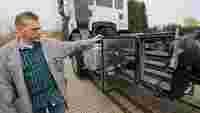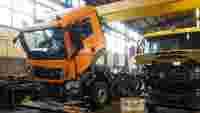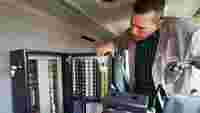A conversion can take up to twelve months, depending on the tasks that the two-way vehicles are supposed to carry out. “Aside from the rail excavators, we do not deliver any standard products,” explains Dirk Löscher, Design Manager, who has been with ZWEIWEG International for 35 years. “There are countless parameters that we have to consider during project development: track profiles, including curve radii that that we have to cope with and the necessary ground clearance, weight distribution for safe locomotion on rails and roads, retaining the structure gauge, etc. Our vehicles are individualized to an extremely high level.” In addition to the mechanical conversions, like the rail running capability, ZWEIWEG alters and expands the working tools, lifting platforms, superstructures, etc. as well as the entire electrical system of the base vehicle. “This begins with something as basic as the lighting systems: rails and roads have different mandatory requirements for lighting. For rail operation, we completely shut down the street lighting, and vice versa,” explains Löscher.


